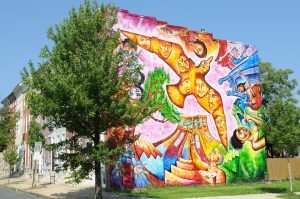Drawing on examples from Baltimore, Phoenix, and other cities, the authors apply the disturbance framework of Peters, et al (2011) to several specific examples of urban disturbance. By specifying the system to include built infrastructure, social norms, and energy and resource flows, as well as biotic components, the authors are able to explain why and how some disturbances (such as the Baltimore fire of 1904 or flooding in Scottsdale Arizona) have larger effects or unexpected recovery pathways compared to other similar disturbances.
Many of the specific observations about how urban disturbances may be magnified or mitigated will not be surprising to urban planners—but the systematic application of an ecological disturbance framework creates the opportunity to learn from patterns of past disturbances in order to better predict the effects of changes in urban structure or disturbance patterns.
Ecologists used to thinking about disturbances such as hurricanes or pest outbreaks will recognize many similar patterns in these urban case studies. And they will be familiar with the need to fully specify the scale and scope of the system they are studying (if not in the habit of including governance systems within that scope). The habit that may be most important to change, argue the authors, is that of thinking of the very existence of people as disturbance.











